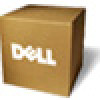Dell PowerVault 700N Dell PowerVault Network Attached Storage (NAS) Systems Ad - Page 5
Overview, iSCSI Deployment
 |
View all Dell PowerVault 700N manuals
Add to My Manuals
Save this manual to your list of manuals |
Page 5 highlights
1 Overview Dell Network Attached Storage (NAS) systems run the Microsoft Windows Storage Server 2008 R2 operating system, which provides a user interface for: • Initial system configuration • Unified storage appliance management • Simplified setup • Management of storage and shared folders Windows Storage Server 2008 R2 is specially tuned to provide optimal performance for NAS. It provides enhancements in share and storage management scenarios, as well as integration of storage appliance management components and functionality. Windows Storage Server 2008 R2 provides an efficient and unified file management by extending and consolidating the management interface. This includes the following features and functionalities: • File Server Resource Manager (FSRM) provides support for performing additional administration tasks. • Share and Storage Management is a snap-in that allows the provisioning of shares via Server Message Block (SMB) and Services for Network File System (NFS) protocols. • Services for Network File System is a feature that enables NFS systems to access files on the NAS system. • Remote Desktop for Administration provides a Windows Server Remote Administration applet that enables browser-based remote access to the management console from non-Microsoft clients. • Single Instance Storage (SIS) improves remote management up to 20 volumes per server. It also supports unSIS or removal of SIS from a volume. iSCSI Deployment iSCSI is a useful and relatively inexpensive way to provide storage for new applications or to provide a network pool of storage for existing applications. iSCSI SANs and iSCSI storage devices are popular for a variety of reasons. They offer the ability to do the following: • Leverage existing investments in Ethernet infrastructures and expertise. • Leverage existing investments in IP protocol. • Offer dynamic capacity expansion. • Simplify SAN configuration and management. • Centralize management through storage consolidation. • Provide scalable performance. • Provide higher storage utilization. • Present volumes as a block storage device. NOTE: To configure the iSCSI for PowerVault storage systems, see technet.microsoft.com/en-us/library/ ee344838(v=ws.10). 5














